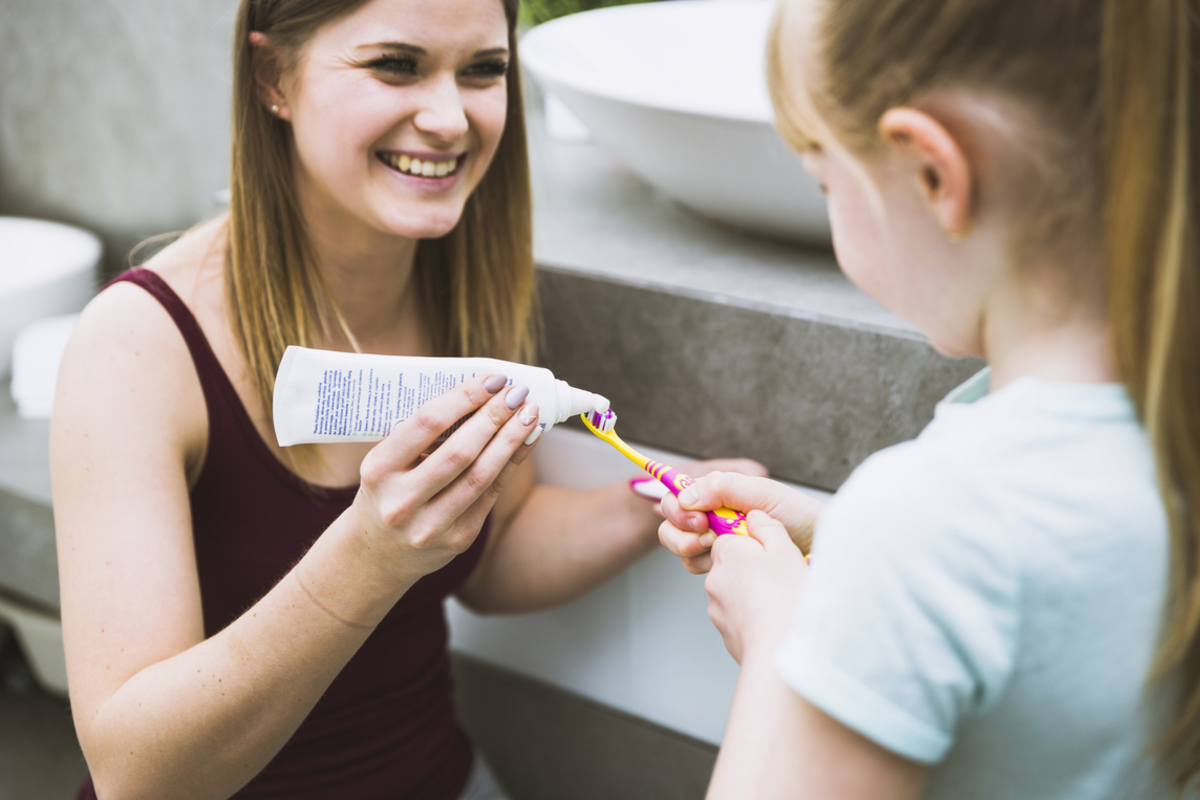The fight against tooth decay is a constant one. It requires diligence and consistency in tooth brushing because there is no vaccine or medicine to protect against tooth decay. There is also a genetic component to it, just as there is to most conditions. Some people will develop tooth decay more easily than others, and there is not too much anyone can do about it.

However, fluoride poising is also a real thing and can be a very serious problem. Is there enough fluoride in toothpaste to cause fluoride poisoning? How effective is fluoride toothpaste in reducing tooth day? Is it safe for use in children of different ages?
Let’s find out.
Is fluoride toothpaste safe for babies and infants?
Milk teeth — or the primary teeth of the child — start coming in around the age of six months. According to the American Academy of Pediatrics, parents should start using a toothbrush and a fluoridated toothpaste to brush their child’s teeth as soon as they erupt.
A toddler's head can also be tilted forward during toothbrushing, so that the toothpaste dribbles out of the mouth rather than into the stomach, however, it is certain that some amount of toothpaste is going to go into the body.
Fluoridated toothpaste for use in children
Children that are a little older and can understand instructions can use more amount of fluoridated toothpaste. From a grain of rice, the amount of toothpaste being used can be increased to the size of a pea. Instruct children to not swallow the toothpaste and to rinse their mouth after brushing. Even if a small amount of fluoridated toothpaste is swallowed occasionally, it is not a cause of concern.
Do you need to use fluoridated toothpaste even if you get fluoride in the water? In areas where fluoride is added to the water as a part of a community effort to try and fight tooth decay, the concentration of the fluoride is kept quite low. The idea for such community efforts is to keep the risk non-existent and to have just the minimum amount of fluoride concentration needed for its anti-cavity effect.
What is fluorosis?
Fluorosis is a condition which is caused by an excess amount of fluoride being provided to the teeth during their development. Areas which have a high amount of fluoride in the water have a high incidence of fluorosis because pregnant women end up drinking that same water.
There are different grades of fluorosis and in most cases, only a small white spot is visible on the teeth. In severe cases, multiple pits and discoloration of the teeth can be seen which can be a major esthetic concern. The effects are cosmetic only and there are no ill-health effects of fluorosis.
It is next to impossible to develop fluorosis from using only the recommended amount of fluoride toothpaste.
Is using a fluoridated toothpaste the only option for children?
Not at all. Brushing can be effective even without the use of any toothpaste at all. It is the mechanical action of the brush scrubbing the teeth which removes the plaque. There are also multiple kinds of toothpaste that are marketed as fluoride-free and parents can use them in young children if they are concerned. However, that would be depriving your child of the best supplement we of know right now to prevent tooth decay.
A final word
Multiple studies have thoroughly investigated the effect of fluoride on the teeth and they have all come to the same conclusion: Fluoride prevents tooth decay, reverses early tooth decay, and makes the teeth's surfaces more resistant to attack from acid-causing bacteria.
The use of fluoridated toothpaste is recommended for use in people of all ages, right from the time the teeth erupt into the mouth. The American Academy of Pediatrics, The American Association of Pediatric Dentistry, and The American Dental Association all advise the use of fluoridated toothpaste as a measure to prevent tooth decay.

